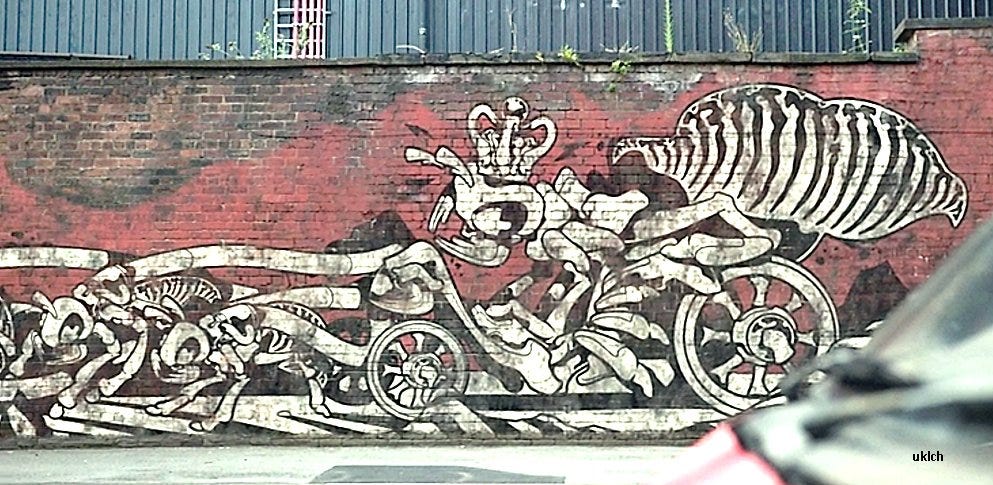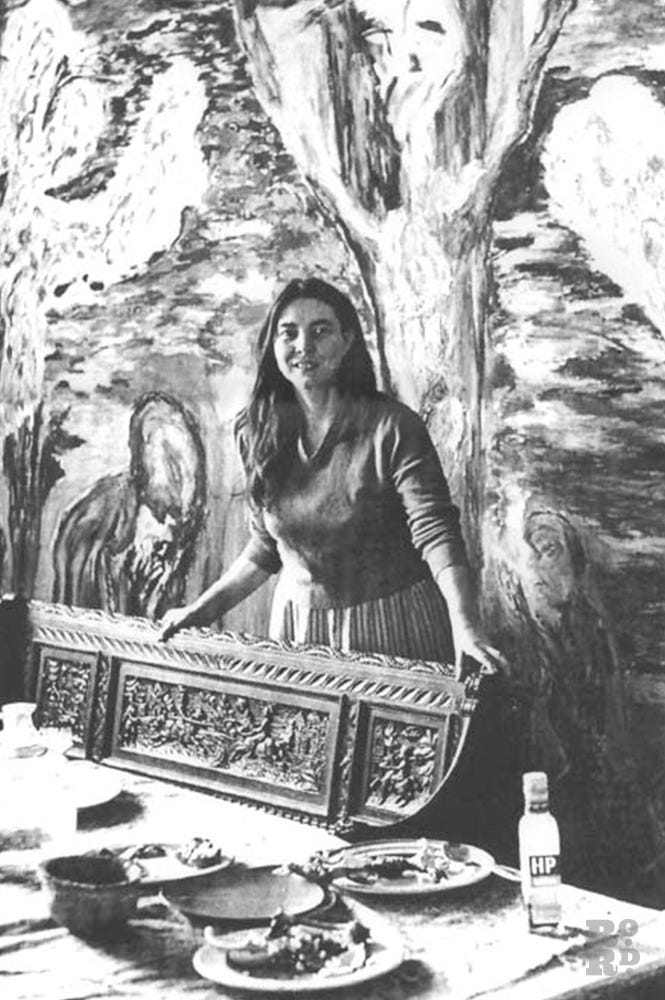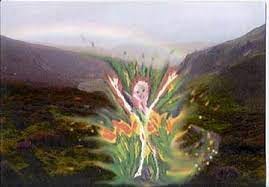Hello, friends, old and new. I hope you don’t mind if I change the subject and put my Reb Shlomo story on pause. I intend on going back to it, but I have to edit my old draft first, and right now, that feels like too much work. Besides, I’m in the mood for something else.
As you’ve seen by my fanfic, I’m smitten with the actor Robert Carlyle. His most recently released project is the limited series, “The Full Monty,” which reunites the cast of the 1997 movie of the same name. I loved the whole series, but I’m going to focus only on Episode Three. It’s called “La Vie en Rose.” According to Google translate, that’s the French equivalent of “Through Rose Colored Glasses.”
Robert Carlyle plays a character named Gaz, and he definitely sees the world with a rosy outlook. But misguided as he often seems, he usually turns out to be right. In the original movie, after he and his friends lose their jobs in a factory shut-down, he persuades them to put on a Chippendale’s-type strip show to earn some badly needed cash. The final scene is their performance.
(As a frum woman, I want to make clear that I didn’t watch that part. I’m probably the only female fan of Robert Carlyle who hasn’t, but I’m an Orthodox Jew first and foremost.)
Twenty-five years later, Gaz is still a dreamer, schemer, and rule-breaker. We fans love him for it, even when his schemes fall apart in a spectacular mess. In Episode Three, he is working as a hospital porter (a/k/a an orderly) in the psych ward. When the patients are doing self-portraits in art therapy one day, he is bowled over by what one of them has drawn.
“It’s an ant,” the patient explains, “because I’m Antony.”
Gaz remembers where he’s seen that artwork before. “The Ant” was a local street artist before he was hospitalized. Gaz makes some excuse to take him out of the room, brings him outside to his van, and drives him around the city, getting “the full gallery tour.”
Gaz spends the rest of the episode persuading Ant that he could become the Next Big Thing. “There used to be two ways out of here,” he says. “Football or rock ‘n roll. But now there’s this.”
Jumping back to reality, Robert Carlyle’s own life story matches this pattern. He made it out of the working class with his acting. And now he’s known for promoting the work of young artists, especially musicians. Every now and then, he puts out a tweet to his fans, asking for their favorite new songs, and then he retweets the ones he likes best. He calls it “Saturday Tunes,” though occasionally he does it on another day of the week. For obvious reasons, I almost always miss it. When I finally caught one of his weekday tweets, it was Tisha B’Av, so I couldn’t participate then either. But I suppose it doesn’t really matter. It’s not like I have any tunes to add. What am I going to send him? Reb Shlomo’s niggunim?
Ant tells Gaz that his meds squelch his inspiration. Gaz helps to wean him off. I won’t tell you what happens next because that will spoil the ending, but I highly recommend you watch for yourself. Meanwhile, I want to springboard into my own guesses about what informed the episode. I hope it will be of interest, especially to my fellow dearies/Rumbellers/Robert Carlyle fans, even though it’s not directly about him.
An Intro to R.D. Laing
Robert Carlyle is from Glasgow, Scotland, and another famous native son of that city is the anti-psychiatry psychiatrist, R.D. Laing. I’ve always suspected Laing’s thought was an influence on him, not just because they’re both Glaswegians, but because he’s famous for playing “nutters.” Laing’s writing would have been a rich source for research. Along the same lines, I’ve been wondering if Alice Nutter, co-writer of “The Full Monty” series, was influenced by him, too. If “Nutter” is her real surname, she must have taken a hellish ribbing for it as a kid. That might be enough to lead a person to Laing, the doctor who called bullshit on the practice of psychiatry, if not the whole concept of “madness” itself.
The most entertaining way to learn about R.D. Laing is by watching the biopic “Mad to Be Normal,” which stars David Tennant as Dr. Laing and Elisabeth Moss as his lover. But I think it’s better to learn from reality, and there are plenty of Dr. Laing’s lectures and interviews available on YouTube. Naturally, I hope you’ll read what I’m about to say, but please don’t take me as any kind of authority.
“Mad to Be Normal” is a fitting title for Laing’s biopic because what he taught was that the people who “go mad” are just sensitive souls reacting to the crazy world around them. He believed that what often gets labeled as mental illness is a temporary state. It has to run its course, like a bad LSD trip or a waking nightmare. The job of the psychiatrist oughtn’t be to medicate it, which effectively prolongs the “disease,” but to let it rip and be supportive of the patient, no matter what it takes.
The best account from a patient’s point of view was written by Mary Barnes, along with her doctor, Joseph Berke zt”l. I’ve got a special affinity for him because he became a frum Yid. I’ve often wondered if Mary, who went through a spiritual return as part of her healing, is the one who inspired him to connect to his own religious roots.
Without her meds, Mary regressed to an infantile state. Dr. Berke had to bottle-feed her and change her diapers. Because she made a habit of playing with her feces, he had the idea of getting her sculpting lessons. She liked painting even more, and by the end of the book, he marvels at how the woman who was once afraid to leave her own bed ended up graciously greeting guests at her gallery show.
It seems to me that writers Simon Beaufoy and Alice Nutter had to have had Mary Barnes in mind with Antony’s story. What Dr. Berke and Dr. Laing did for her is what Gaz wants to do for him. So I hope there’s a Season Two so we can see more of Ant’s journey. There’s a hint to it in the final episode, but what I’d like to see is best phrased by Dr. Laing himself in the concluding couplet of his poem, “I Mean to Scream.”










